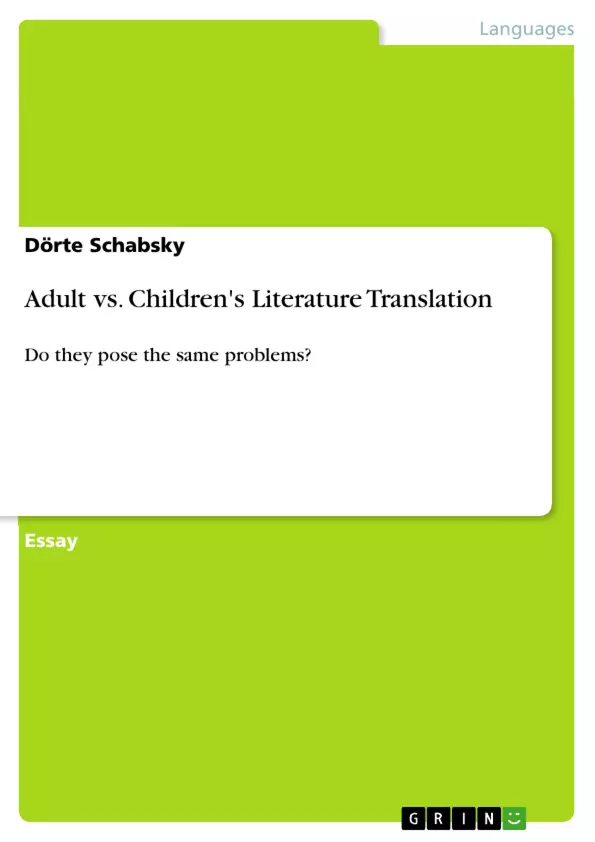In her dissertation Thomson-Wohlgemuth argues that ‘there seems to be agreement that the translation problems in texts for adults and for children are, essentially, the same; they can be described using the same concepts and can be arranged in the same categories’ (1998, p. 36).
However, there are a lot of specific translation problems in children’s literature translation which could of course be grouped in broad categories, which also contain similar problems concerning adult texts translation but which have to be handled quiet differently due to target group specific considerations. The following essay will argue this point choosing from a huge range three exemplary categories comprising specific children’s literature translation problems.
Inhaltsverzeichnis (Table of Contents)
- Introduction
- Cultural Embedded Elements
- Names
- Read-Aloud-Ability
- Visual Elements
- Conclusion
Zielsetzung und Themenschwerpunkte (Objectives and Key Themes)
This essay investigates the specific challenges of translating children's literature, arguing that they differ significantly from those encountered in adult literature translation. The main objective is to demonstrate the unique complexities of translating children's literature due to the target audience's specific needs and preferences.
- Cultural embedded elements
- Proper names in children's literature
- Read-aloud-ability
- Visual elements in children's literature
- The impact of target audience age on translation problems
Zusammenfassung der Kapitel (Chapter Summaries)
The essay begins by introducing the argument that children's literature translation poses unique challenges due to the target audience's specific needs and preferences. The essay then explores various categories of translation problems specific to children's literature, including cultural embedded elements, names, read-aloud-ability, and visual elements. Each category is explored in detail, highlighting the specific challenges and considerations that translators face in these contexts. For example, the essay discusses the significance of adapting cultural norms in children's literature to align with the target culture, considering the educational role of children's literature. Additionally, it explores the challenges of translating proper names, particularly in children's literature aimed at a young audience, where foreign names might be perceived as challenging for young readers.
Schlüsselwörter (Keywords)
Children's literature, adult literature, translation problems, cultural embedded elements, names, read-aloud-ability, visual elements, target audience, accessibility, domestication, foreignization, polysystem, interrelation between text and image, children's literature translation problems.
- Quote paper
- Dörte Schabsky (Author), 2012, Adult vs. Children's Literature Translation, Munich, GRIN Verlag, https://www.grin.com/document/207988



